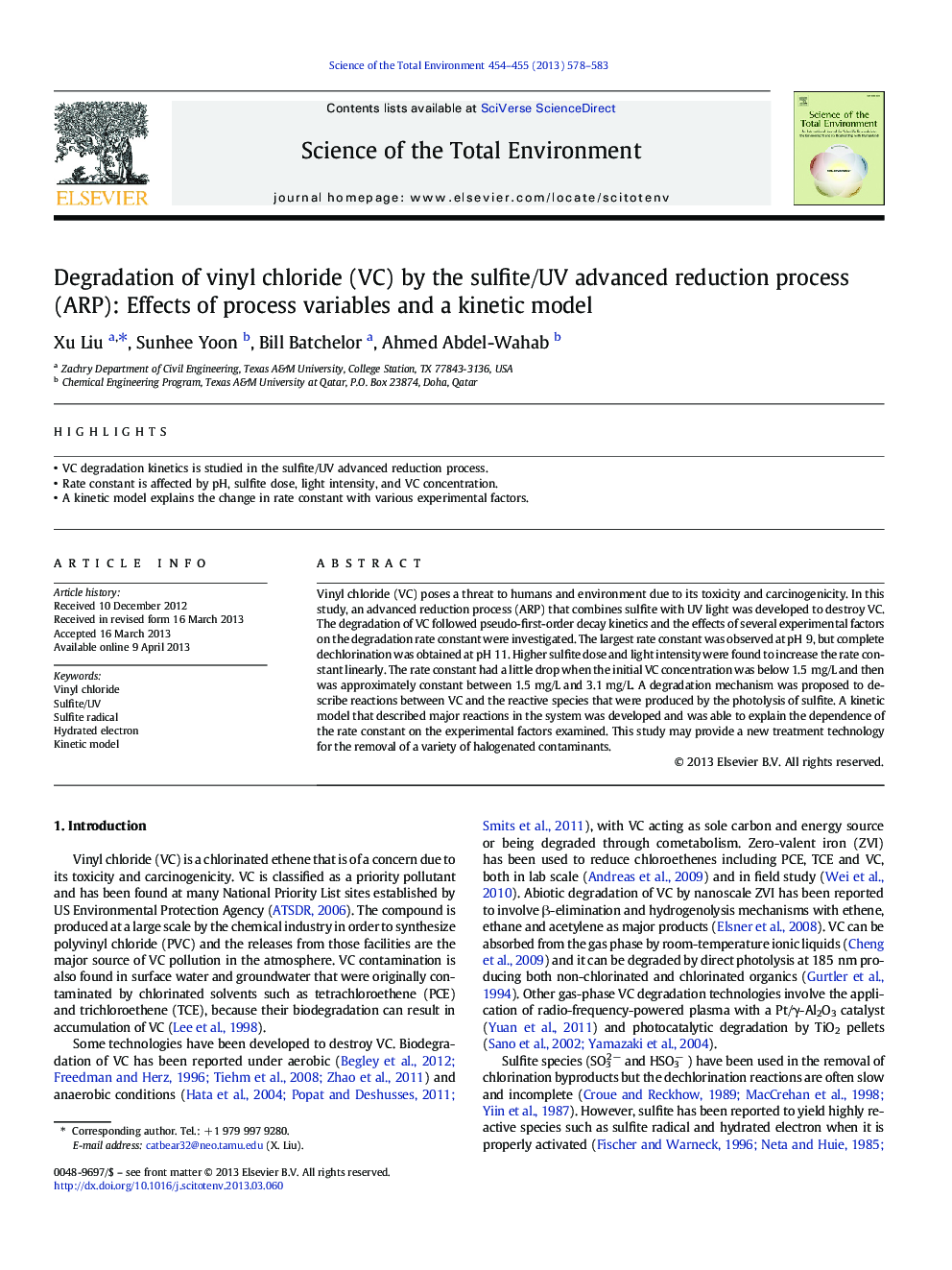| Article ID | Journal | Published Year | Pages | File Type |
|---|---|---|---|---|
| 6333044 | Science of The Total Environment | 2013 | 6 Pages |
Abstract
Vinyl chloride (VC) poses a threat to humans and environment due to its toxicity and carcinogenicity. In this study, an advanced reduction process (ARP) that combines sulfite with UV light was developed to destroy VC. The degradation of VC followed pseudo-first-order decay kinetics and the effects of several experimental factors on the degradation rate constant were investigated. The largest rate constant was observed at pHÂ 9, but complete dechlorination was obtained at pHÂ 11. Higher sulfite dose and light intensity were found to increase the rate constant linearly. The rate constant had a little drop when the initial VC concentration was below 1.5Â mg/L and then was approximately constant between 1.5Â mg/L and 3.1Â mg/L. A degradation mechanism was proposed to describe reactions between VC and the reactive species that were produced by the photolysis of sulfite. A kinetic model that described major reactions in the system was developed and was able to explain the dependence of the rate constant on the experimental factors examined. This study may provide a new treatment technology for the removal of a variety of halogenated contaminants.
Related Topics
Life Sciences
Environmental Science
Environmental Chemistry
Authors
Xu Liu, Sunhee Yoon, Bill Batchelor, Ahmed Abdel-Wahab,
